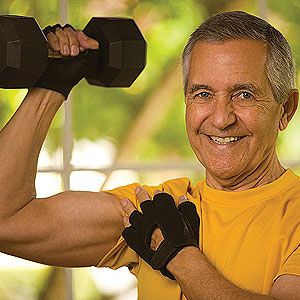
Aging Gracefully: Fitness for Older Adults
As we age, staying physically active becomes increasingly important to maintain a healthy body and mind. Regular exercise and fitness activities not only help in preventing chronic health conditions but also improve balance, flexibility, and overall mental wellbeing. Engaging in fitness routines specifically designed for older adults can greatly enhance their quality of life and allow them to age gracefully.
Types of Fitness Activities for Older Adults
When it comes to fitness for older adults, there are numerous activities to choose from, depending on individual preferences, physical abilities, and limitations. Some of the most popular fitness activities for seniors include:
Walking: Walking is a low-impact exercise that can be easily incorporated into daily routines. It helps improve cardiovascular health and overall endurance.
Strength Training: Building and maintaining muscle strength is crucial in preventing falls and maintaining a healthy weight. Strength training exercises can be done using light weights or resistance bands.
Yoga: Yoga improves flexibility, balance, and mental wellbeing. It also helps in alleviating joint pain and reducing stress levels.
Aquatic Exercises: Water-based exercises are gentle on joints while providing resistance for muscle strength. Swimming, water aerobics, and aqua Zumba are popular choices.
Cycling: Cycling is a low-impact activity that helps improve cardiovascular health and strengthens leg muscles. It can be done outdoors or on stationary bikes.
Benefits of Fitness for Older Adults
Regular fitness activities offer several benefits to older adults:
Improved Physical Health: Exercise reduces the risk of various chronic conditions such as heart disease, diabetes, and osteoporosis. It also boosts immunity and promotes better sleep.
Mental Wellbeing: Physical activity releases endorphins, which improve mood and reduce symptoms of depression and anxiety. It also enhances cognitive function and memory.
Enhanced Balance and Flexibility: Fitness activities that focus on balance and flexibility help prevent falls and injuries, enabling older adults to maintain their independence.
Increased Social Interaction: Participating in group fitness classes or activities can provide an opportunity to socialize and create new connections, combating feelings of isolation and loneliness.
Better Quality of Life: Regular exercise improves overall quality of life by increasing energy levels, improving self-esteem, and promoting a sense of accomplishment.
Tips for Safe and Effective Fitness
Consult a Healthcare Professional: It is always advisable to consult a healthcare professional before starting any new fitness routine, especially for individuals with existing health conditions or critical limitations.
Start Slow and Progress Gradually: Begin with low-intensity exercises and gradually increase intensity and duration over time to avoid muscle strains or injuries.
Make it a Habit: Consistency is key. Aim for at least 150 minutes of moderate aerobic activity each week and incorporate strength training exercises at least two days a week.
Listen to Your Body: Pay attention to any discomfort or pain during exercise. If something doesn’t feel right, it’s important to modify or stop the activity and seek guidance if necessary.
Stay Hydrated: Drink plenty of water before, during, and after exercising to keep the body hydrated and prevent overheating.
Warm Up and Cool Down: Always start with a gentle warm-up and end with a cool-down session to prepare and recover the body for exercise respectively.
Wear Proper Gear: Opt for comfortable and supportive shoes and clothing suitable for the chosen activity. This helps prevent injuries and maximizes performance.
Listen to Your Body: Pay attention to any discomfort or pain during exercise. If something doesn’t feel right, it’s important to modify or stop the activity and seek guidance if necessary.
Conclusion
Aging gracefully and maintaining a healthy lifestyle is within reach for older adults through regular fitness activities. Engaging in low-impact exercises such as walking, strength training, yoga, aquatic exercises, and cycling can provide numerous physical and mental health benefits. Remember to consult a healthcare professional before starting any new exercise routine and follow the tips mentioned above to ensure safe and effective fitness activities. With dedication and consistency, older adults can age gracefully and enjoy an improved quality of life.


